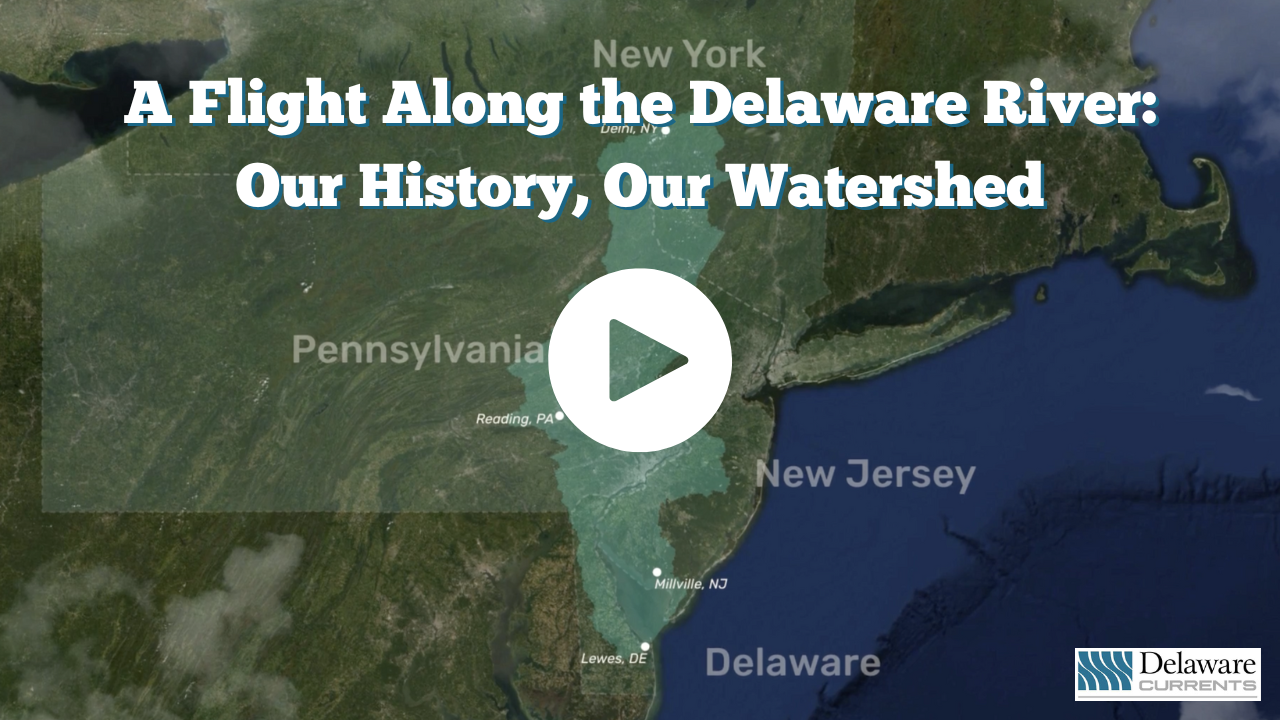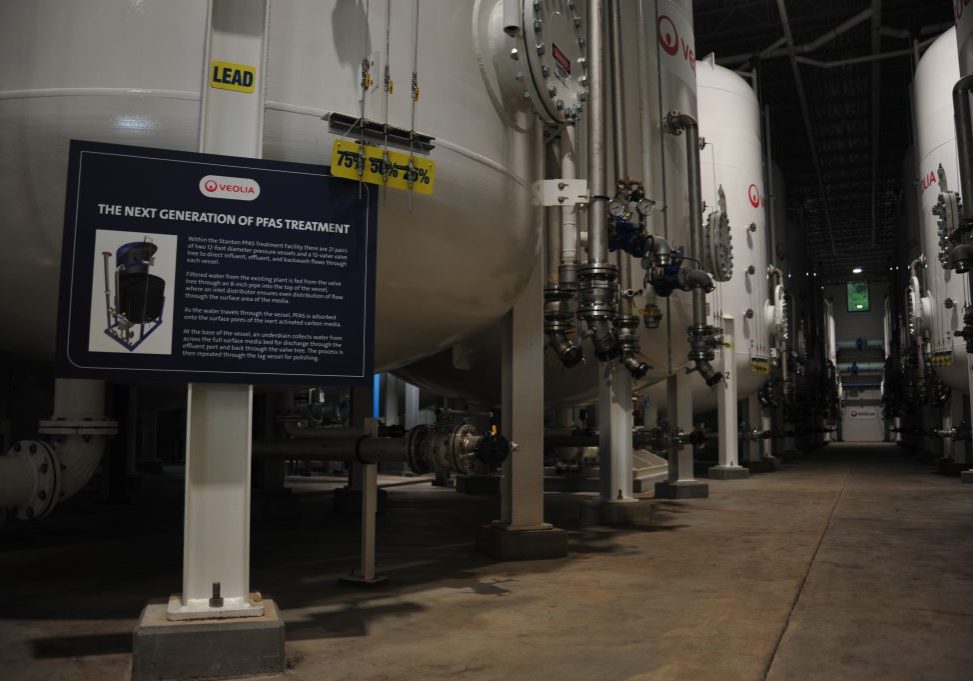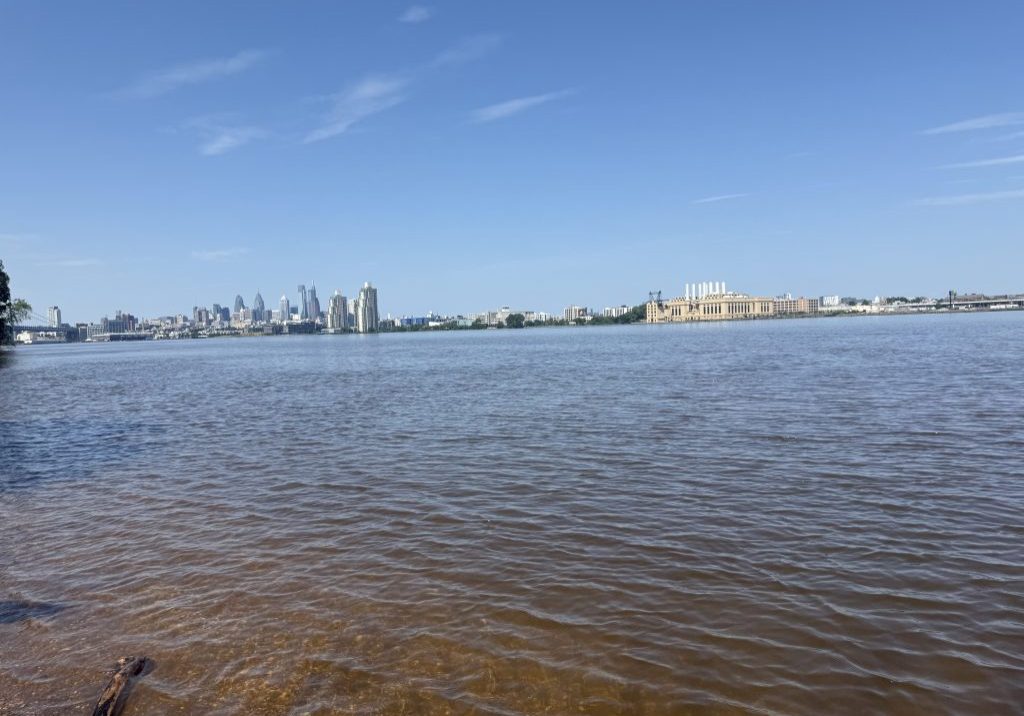
Backers of Gibbstown LNG dock seek permit renewal from the DRBC
| April 21, 2025

For our complete coverage of the Wyalusing, Pa./ Gibbstown, N.J. LNG project, please click here.
The developers of a port on the Delaware River in Gibbstown, N.J., that would serve as a storage and export site for liquified natural gas are seeking a three-year extension of their permit.
The port has been one leg of a longstanding three-legged project to process natural gas from the Marcellus shale region of Pennsylvania and ship it overseas. However, that plan has had two legs knocked out — the critical loss of the ability to ship LNG by rail and the abandonment of a site to process LNG. As a result, the project faces an unclear future.
The port developers, Delaware River Partners, were first granted a permit by the Delaware River Basin Commission in June 2019, and gained a renewal in June 2022. That renewal is set to expire in two months. The permit would allow for river dredging and the creation of a second berth at the dock.
The port, known as Dock 2 at 200 North Repauno Ave. in Greenwich Township in Gloucester County, would be the end point of what has been planned as a complicated and multi-faceted project to export natural gas from the Marcellus shale region in Pennsylvania.
The more intricate LNG export project, led by New Fortress Energy, has been in the works for at least eight years and sunk costs have already eclipsed at least $100 million. But even after all that time and expense, not a gallon of LNG has been transported because of layers of regulatory reviews, lawsuits and other setbacks.
Read our comprehensive Gibbstown LNG coverage here.
Making the case for a renewal
The DRBC is accepting written comments on the proposed renewal of the docket, or permit, through 5 p.m. April 24. Comments can be submitted here.
In a letter to the DRBC, Delaware River Partners, a subsidiary of New Fortress, noted that “it has been diligently pursuing the project and has secured all required government approvals,” including state and federal permits.
“However, due to market conditions and other factors, construction has been delayed,” the applicants wrote. “Significant expenditures have been made to secure and extend the required government approvals.”
Project has been on a twisty path
Since the port project was first proposed, it’s come under heavy fire from environmental groups.
The dock to accommodate LNG exports by ship was to be one link in a long chain that starts in Wyalusing, a community in rural Pennsylvania, and extends nearly 175 miles south and east to Gibbstown,
The plan had been for fracked natural gas to be sent via pipelines from the Marcellus shale region of Pennsylvania to a plant in Wyalusing. The plant would then liquefy the gas by cooling it to 260 degrees below zero, and send it by trucks and/or rail tankers to the Gibbstown port. From the port, the LNG would be shipped via the Delaware River to overseas markets. The $800 million project was projected to have an average daily production capacity of 3.6 million gallons.
However, New Fortress last year signaled it was shifting its plans for the 335-acre Wyalusing site, which was originally planned to host the gas liquification plant. Instead, according to the company, it is looking to develop the site into an electricity-hungry data center that would accommodate cloud-computing and artificial intelligence needs.
“The need for turnkey digital infrastructure is perhaps the greatest market need in the world,” says the website for a New Fortress Energy subsidiary, Klondike Digital Infrastructure. “We’re partnering with data centers to bring the power to them.”
The website notes that it has access to natural gas less than a mile away at the Marc I pipeline and electrical infrastructure and long-haul fiber routes in place.
Assessing the future of the LNG export project
So, where does that leave the overall LNG export project? It’s unclear. A press representative for New Fortress did not respond to an email for comment.
With the original plan for processing natural gas in Wyalusing and sending it to Gibbstown now off the table, it’s unknown what gas supplier the Gibbstown dock might accommodate. It’s possible some other major supplier apart from New Fortress might emerge as a leading user for the port though it’s also unknown how — and how much — gas would get to Gibbstown.
Further clouding — and complicating — the project’s outlook was a significant federal court ruling in January that applied the brakes to a rule from the first Trump administration that granted blanket permission for the transportation of LNG by rail.
In a case brought by numerous environmental groups and state attorneys general, the U.S. Court of Appeals for the District of Columbia Circuit overturned the LNG-by-rail rule that had been adopted by the U.S. Department of Transportation’s Pipeline and Hazardous Materials Safety Administration in 2020.
“In sum,” the judges wrote, “transportation of LNG by rail entails a potent combination of risk and extreme danger that plainly has a significant impact on the environment.” The court faulted the agency for failing to prepare an environmental impact statement ahead of the rule’s adoption.
Environmental groups warned of catastrophic consequences of a train derailment and failure of the specialized tankers carrying LNG, with one group asserting that the energy released in 22 tanks cars of LNG would be equal to the atomic bomb dropped on Hiroshima, Japan, during World War II. Opponents have referred to the long string of LNG rail tankers going through populated areas as “bomb trains.”
The loss of the ability to transport LNG by rail would appear to be a significant setback for the project considering that one train car could carry roughly triple the volume of a single highway tanker, and plans called for trains of up to 100 tankers to make the trip to Gibbstown.
A New Fortress Energy affiliate, Energy Transfer Partners, has said in the past that allowing the transportation of LNG by rail was “integral to the viability of this enterprise” and “an important component of this undertaking.”
But the future prospects of re-establishing an LNG-by-rail-rule would appear to be slim.
An analysis by the law firm K&L Gates noted: “The D.C. Circuit’s ruling — which came down the Friday before President Trump’s inauguration — will add another layer of complexity to any effort to reinstate the LNG-by-Rail Rule. For now, this hurdle remains procedural. To reinstate the LNG-by-Rail Rule, PHMSA will have to prepare an EIS and take into account the environmental risks before approving the transportation of LNG by rail. And while the D.C. Circuit expressed ‘no opinion on the wisdom of any particular set of safety protocols,’ it left the door wide open to later challenges.”







